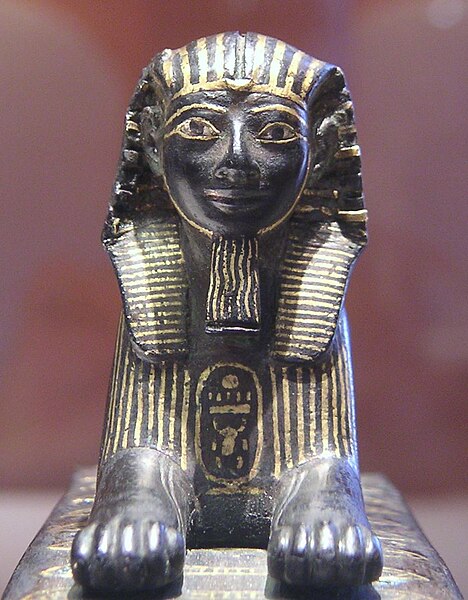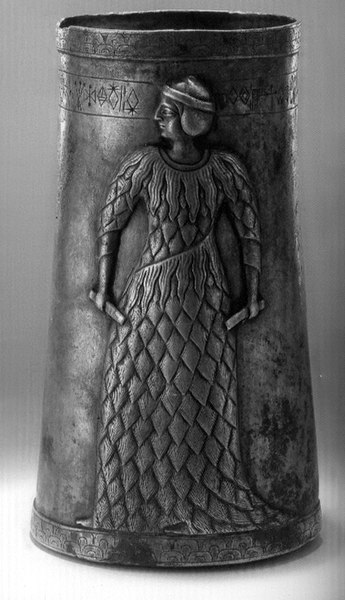The 3rd millennium BC spanned the years 3000 to 2001 BC. This period of time corresponds to the Early to Middle Bronze Age, characterized by the early empires in the Ancient Near East. In Ancient Egypt, the Early Dynastic Period is followed by the Old Kingdom. In Mesopotamia, the Early Dynastic Period is followed by the Akkadian Empire. In what is now Northwest India and Pakistan, the Indus Valley civilization developed a state society.
Minoan Snake Goddess.
A model of the prehistoric town of Los Millares, with its walls.
Detail of a victory stele of Akkadian king Rimush
Harp Player from the island of Keros, made by the Cycladic culture sometime in the 28th century BC.
The Bronze Age is a historical period lasting from approximately 3300 to 1200 BC. It is characterized by the use of bronze, the use of writing in some areas, and other features of early urban civilization. The Bronze Age is the middle principal period of the three-age system, between the Stone and Iron Ages. This system was proposed in 1836 by Christian Jürgensen Thomsen for classifying and studying ancient societies and history. Worldwide, the Bronze Age generally followed the Neolithic period, with the Chalcolithic serving as a transition.
One of the Alaca Höyük bronze standards from a pre-Hittite tomb dating to the third millennium BC, from the Museum of Anatolian Civilizations, Ankara
Hittite bronze tablet from Çorum-Boğazköy dating from 1235 BC, Museum of Anatolian Civilizations, Ankara
Sphinx-lion of Thutmose III 1479–1425 BC
Late 3rd Millennium BC silver cup from Marvdasht, Fars, with linear-Elamite inscription








